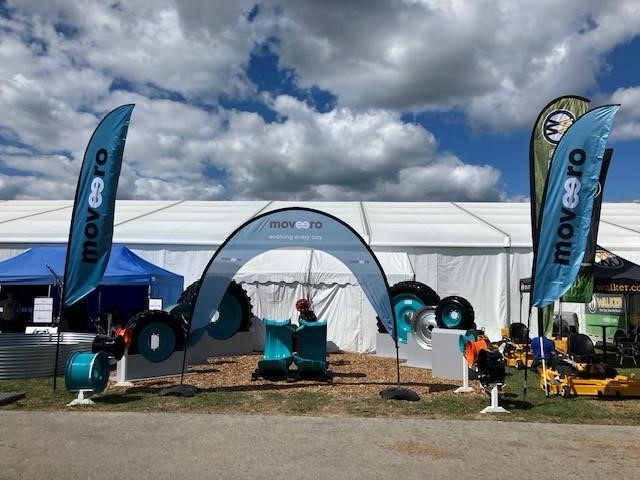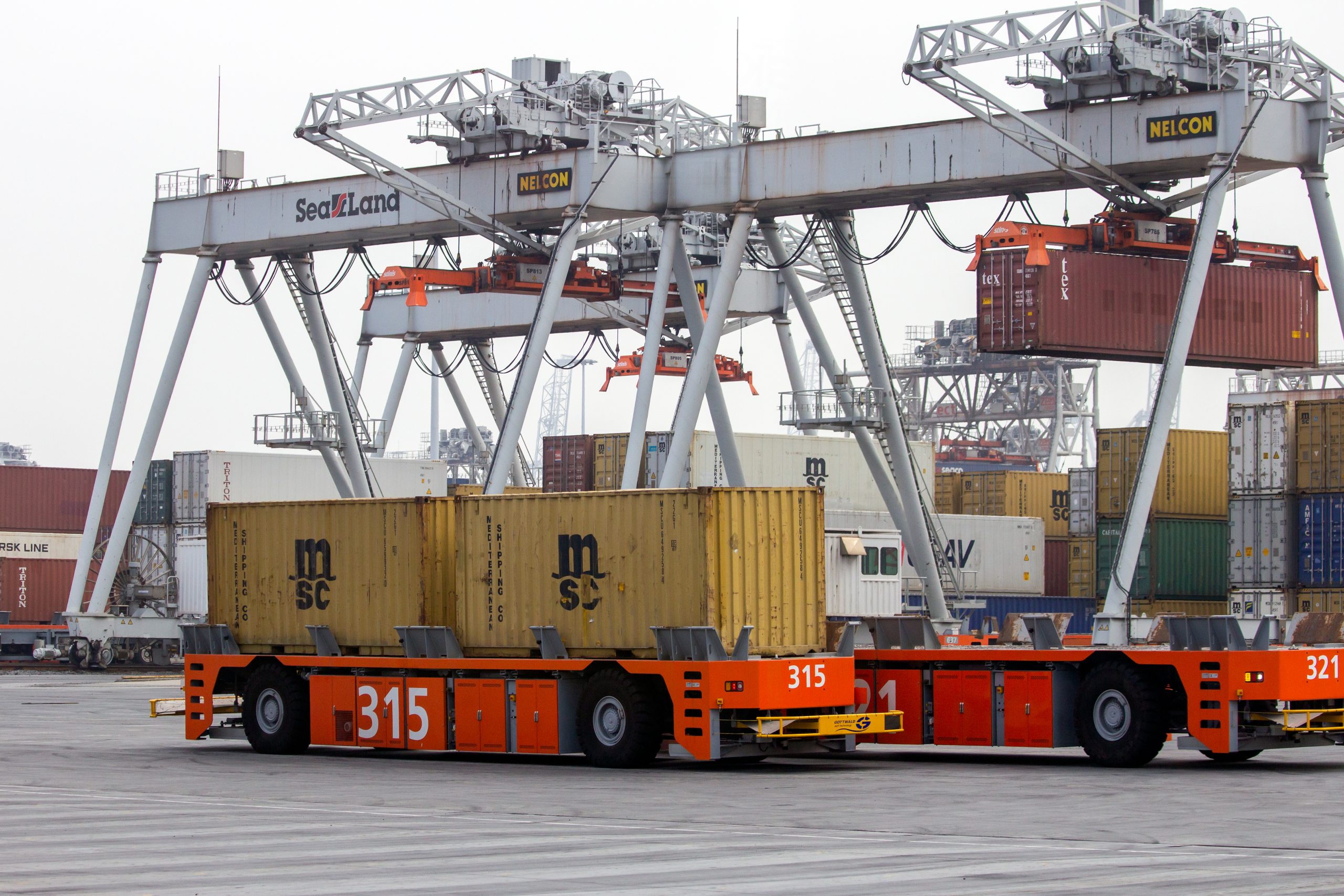
Home / moveero meets the needs of autonomous vehicles

With the use of autonomous vehicles (AVs) in off-highway applications growing rapidly, the designs of a wide range of components, including both wheels and tires, are having to change to reflect the different dynamics of the machines. Indeed, in some sectors, the moveero design team has already responded to their introduction with the development of new, patented wheel technologies to meet the different requirements of these vehicles.
Traditional wheel and rim designs simply may not deliver the performance requirements that are demanded by AVs. Rather than being completely new designs though, AVs generally require wheels that deliver increased durability, strength and longevity, with existing designs and processes evolving to provide solutions that meet these demands.
In off-highway applications, autonomous guided vehicles (AGVs) are widely used in ports around the world. In these harsh and demanding environments, the vehicles operate 24 hours a day, and handle extreme loads. Working autonomously, each vehicle’s movements are fully integrated into a carefully choreographed programme, often involving fleets of more than 40 AGVs working in harmony across a location.
This meticulous planning is designed to maximize efficiency and reduce vessel turn-around times to a minimum. The impact of a failure on any one AGV therefore has a dramatic and very rapid impact on the operation of the whole port. Consequently, reliability, safety and the assurance of long-life performance are critical requirements in the design of their wheels and tires.
Standard wheels are simply unable to cope with this extraordinary operating environment and so over recent years, moveero’s experienced R&D team have worked closely with OEMs, tire manufacturers and port authorities to develop solutions to meet their needs, developing a wheel better able to cope with the increased stresses and so with significantly more resilience to fatigue.
Commenting on the development, Gianpietro Bramé, Chief Engineer, Europe at moveero, said: “Through process innovation, our patented Infini-Forge wheel was developed specifically to the needs of AGVs. The wheels are manufactured through a hot induction forming (HIF) process, which makes them stronger and with a lifespan typically double that of conventionally manufactured, multi-piece wheels.
“The manufacturing process allows great design freedom whilst achieving greater manufacturing accuracy, enabling material to be placed only where it is needed. This results in an increase in rim strength without a significant increase in weight.”
Now established in the material handling sector, AVs are also widely used in surface mining applications, where the driving force behind their introduction is also increased productivity, with their use requiring no breaks and therefore enabling virtually 24/7 operation.
The challenges seen in this sector are therefore very similar, with reliability, durability and long-life performance all critical requirements. The moveero design team has responded to this through a strengthened wheel design to cope with the increased stress.
Infini-Forge is just one example of wheels that are developed to help solve specific problems faced by an ever demanding and important market sector.
Gianpietro Bramé continued: “A further evolution is likely to be in the development of tools for condition monitoring, with sensors for crack detection alerting port operators to the need for preventative maintenance, and load sensors capturing live loads of the vehicles. We have already carried out a good deal of work in this area, collaborating with manufacturers and academia to develop solutions.
“This technology will be invaluable to ports but will also help AVs in other sectors, including underground mining, where the risk of a vehicle failing three miles underground is an obvious barrier to their wider use in these environments. Clearly if preventative maintenance can be accurately predicted, then vehicles can be taken to the surface at the right time, rather than waiting for a failure to occur.”
In other sectors, such as agriculture, the use of AVs is more complex, and some fundamental questions are yet to be resolved. On a farm, the environment is much more varied and the terrain more unpredictable than in a port or mine. It is also less likely that farmers will undertake continuous 24/7 operation and so the challenges for AV suppliers and wheel and tire manufacturers will be quite different to those posed by the mining and material handling sectors.
It may be though that if AVs are used, they will likely be for tractors, to help free up farmers’ time and reduce the impact of labor shortages. Or they could be deployed for specific operations which are perhaps more predictable and/or work in tandem with traditional vehicles, for example harvesting, where an AV could follow a combine during harvesting, collecting and transporting the crop.
Gianpietro Bramé concluded: “Although we have a really good understanding of what the issues are in these sectors, to fully understand each market’s requirements as they continue to evolve, we will continue to work closely with OEMs, tire manufactures and end users to make sure we develop solutions that are right for each of them.
“Agriculture and construction will have different challenges to material handling and mining, but our experience across all these areas means we can bring solutions and technologies that are proven in one sector to help solve the problems faced by another.”